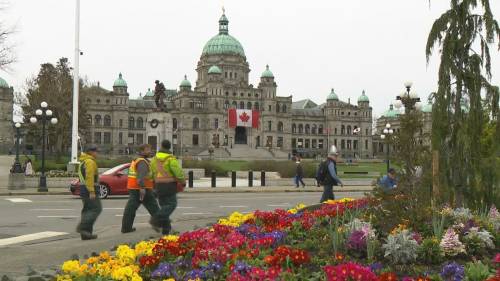In the face of mounting criticism over Canada’s growing public sector, NDP leaders have stepped forward to defend what many fiscal conservatives call unsustainable expansion. Walking through the parliamentary corridor yesterday, NDP House Leader Peter Julian rejected opposition claims that public service hiring has spiraled out of control.
“What Canadians want is actually services,” Julian told reporters gathered outside the House of Commons. “They want to make sure that when they go to Service Canada, there’s somebody there to help them with their passport or their employment insurance.”
The debate intensifies as recent Statistics Canada figures show public administration employment has climbed 16.2% since 2019, adding over 86,000 positions. Conservative critics point to these numbers as evidence of government bloat, while the NDP maintains this growth represents necessary service restoration.
“We’re rebuilding what was cut,” explained NDP finance critic Daniel Blaikie during committee discussions last week. “The previous Conservative government slashed thousands of positions, leaving Canadians waiting months for basic services. What looks like growth is actually recovery.”
In Vancouver’s Kingsway riding, NDP MP Don Davies hosted a town hall where constituents expressed mixed feelings. “I appreciate having someone answer when I call about my CPP,” said retired teacher Margaret Winters. “But my son works in tech and wonders why his taxes fund what he calls ‘bureaucratic redundancy.'” This family’s divided perspective mirrors the national conversation.
The public sector expansion coincides with Canada’s population growth, which surpassed 40 million last year according to Census data. Immigration Minister Marc Miller suggested the staffing increases partly reflect this demographic reality. “When you welcome nearly half a million newcomers annually, you need service capacity to match,” Miller stated during question period.
Budget watchdogs have noted the financial implications. The Parliamentary Budget Officer reported that federal compensation costs have risen by $7.8 billion since 2020. “This trajectory raises legitimate questions about fiscal sustainability,” said economist Trevor Tombe from the University of Calgary. “But it’s also true that service delivery suffered from previous cuts.”
In Ottawa’s Byward Market, near where many public servants work, restaurant owner Jamal Khouri offers perspective from the private sector. “These workers are my customers,” he explained while preparing for lunch service. “When government hires, my business benefits. But I also pay taxes, so I understand both sides.”
Conservative finance critic Jasdeep Sahota has challenged the NDP’s defense, arguing that technology should enable workforce reduction, not expansion. “Other countries are digitizing services and becoming more efficient,” Sahota argued. “Canada seems stuck in a pre-digital mindset where every problem requires more hiring.”
Public service unions present different data points. The Public Service Alliance of Canada released figures showing that despite recent growth, when measured as a percentage of population served, today’s public service remains smaller than it was in 2010. “This isn’t expansion,” said PSAC president Chris Aylward. “It’s barely keeping pace with population needs.”
The debate touches every region differently. In Halifax, provincial public sector workers face hiring freezes while federal departments expand. “It creates an odd dynamic,” observed Nova Scotia MLA Claudia Chender. “Federal services improve while provincial ones strain under austerity measures.”
Rural communities particularly feel the impact of service levels. In northern Manitoba, former band councillor Robert Beardy describes driving three hours to reach Service Canada offices. “When they talk about cutting or expanding government, it’s not abstract for us,” Beardy said. “It’s about whether we can access our benefits without taking a day off work.”
Some municipal leaders have proposed a middle ground. Calgary Mayor Jyoti Gondek suggested targeted growth in service-facing positions while trimming administrative roles. “The public doesn’t care about organizational charts,” Gondek noted at the Federation of Canadian Municipalities conference. “They care about getting services efficiently.”
As budget season approaches, the NDP’s defense of public sector growth will face increased scrutiny. Treasury Board President Anita Anand has promised a “strategic review” of spending, though critics question whether meaningful constraints will emerge.
For many Canadians caught between frustration over government inefficiency and appreciation for improved services, the issue defies simple partisan positions. As Toronto retiree Sam Goodwin put it while waiting at a Service Canada office: “I don’t care how many people they hire. I just want my passport renewed before my cruise next month.”
The debate ultimately reflects competing visions of government’s role in Canadian society. The NDP’s defense centers on service delivery and economic stabilization, while opposition parties question the sustainability and necessity of continued growth. As federal departments plan their 2024 staffing levels, Canadians will be watching to see which vision prevails.






